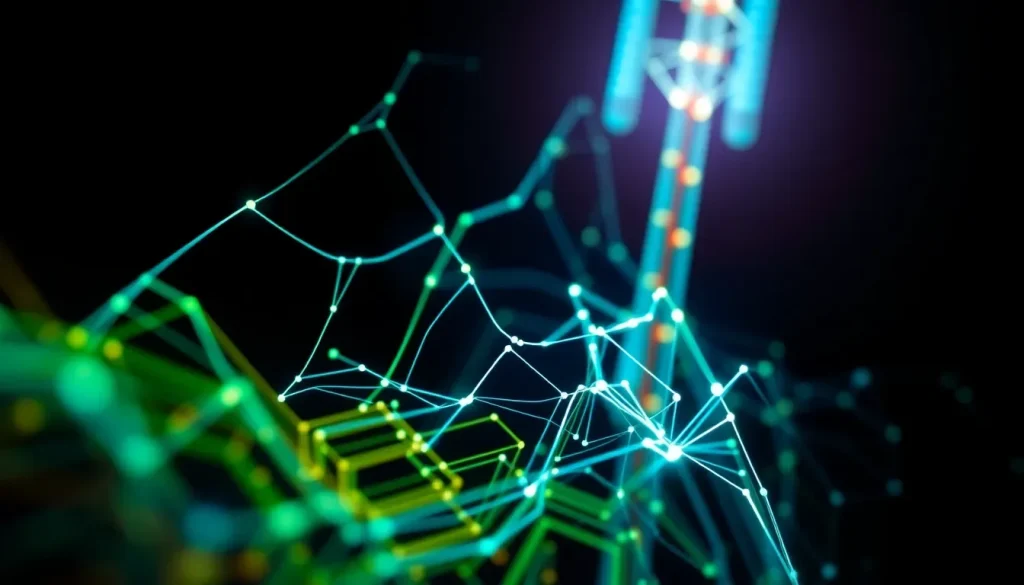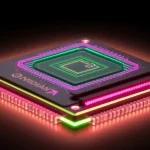NVIDIA and Nokia Partner to Deliver Next-Gen 6G Connectivity with AI

NVIDIA's recent announcement of a strategic partnership with Nokia marks a significant milestone in the intersection of artificial intelligence and telecommunications. This collaboration aims to harness the power of AI to pioneer the next generation of connectivity, specifically 6G. But what does this partnership entail, and how will it impact the future of telecommunications?
NVIDIA and Nokia: A Strategic Alliance for 6G Connectivity
NVIDIA has positioned itself at the forefront of technological innovation, consistently integrating AI into various sectors. With this new partnership with Nokia, the telecommunications industry is set to experience transformative changes. At the GTC 2025 keynote, NVIDIA's CEO announced an investment of $1 billion into Nokia, priced at $6.01 per share. This investment signifies a commitment to developing cutting-edge AI-driven solutions aimed at enhancing connectivity.
The collaboration is designed to merge NVIDIA's advanced computing technology with Nokia's established telecom infrastructure, paving the way for a new era of AI-native wireless networks. This partnership stands to revolutionize how consumers and enterprises interact with mobile networks, as it focuses on creating enhanced, AI-powered experiences.
This partnership marks the beginning of the AI-native wireless era, providing a robust foundation for consumer experiences and enterprise services at the edge of networks.
The Role of AI in Next-Generation Telecommunication
The initiative will utilize NVIDIA's new products, branded as ARC (Aerial RAN Computer), designed specifically for 6G computing. This platform will integrate RAN (Radio Access Network) software with NVIDIA's CUDA tech stack to achieve unprecedented performance levels. Notably, the ARC will be equipped with Grace CPUs and Blackwell GPUs, setting a new standard for telecom infrastructure.
How the ARC Platform Enhances RAN Infrastructure
The ARC ecosystem's primary goal is to enhance the existing RAN buildout by embedding advanced AI capabilities directly into the network. This approach not only optimizes performance but also provides a seamless transition for existing customers moving towards 6G. Here are some critical features of the ARC platform:
- Integration with CUDA: Enhances computational efficiency.
- High-Performance Hardware: Combines Grace CPUs and Blackwell GPUs for superior processing power.
- Scalability: Supports seamless upgrades from current RAN networks to AI-optimized solutions.
- Edge AI Capabilities: Enables robust AI inferencing at the network's edge.
- Future-Proofing: Positions telecom providers for success in a rapidly evolving market.
Nokia will also accelerate the rollout of its 5G and 6G RAN software on the NVIDIA CUDA® platform. This integration will enhance Nokia's RAN portfolio by embedding NVIDIA ARC-Pro at the core of their next-gen AI-RAN solutions, facilitating a smoother transition for mobile network customers.
Timeline for Implementation and Field Testing
As for the practical application of this technology, NVIDIA has announced that T-Mobile, a key network carrier, will initiate "field tests" of the AI-RAN technology as early as 2026. This timeline is crucial as it sets the stage for 6G innovations to commence in the United States, showcasing the collaborative efforts between NVIDIA and Nokia in real-world scenarios.
The Implications of AI-RAN Technology
The introduction of AI-RAN technology presents numerous implications for both consumers and businesses. Here are some potential benefits:
- Enhanced Connectivity: Improved network reliability and speed.
- AI-Driven Insights: Greater data analytics capabilities for better service delivery.
- Cost Efficiency: Reduced operational costs through optimized network performance.
- Scalability: Ability to adapt to growing demands for bandwidth and connectivity.
- Innovative Services: New applications and services powered by advanced AI capabilities.
As this partnership unfolds, consumers and enterprise users alike can expect a transformative shift in how telecommunications operate, thanks to the integration of AI technologies.
The Future of Telecommunications: A Look Ahead
NVIDIA and Nokia's partnership is not just about 6G; it's a vision for the future of telecommunications where AI plays a crucial role. The collaboration signifies a strategic approach to tackle the challenges of increasing data traffic and the demand for faster connectivity.
While the immediate focus is on 6G, the implications of this partnership could extend beyond telecommunications. As AI continues to evolve, its applications may reshape various industries, enabling smarter cities, enhanced IoT ecosystems, and much more.
For those interested in a deeper understanding of this partnership, a recent video featuring NVIDIA's CEO Jensen Huang and Nokia's leadership discusses the implications and expectations from this collaboration. You can watch it here:
As we move forward, it will be fascinating to observe how this partnership unfolds and the impact it has on the global telecommunications landscape. The integration of AI into telecommunications is just beginning, and the potential is vast.




Leave a Reply